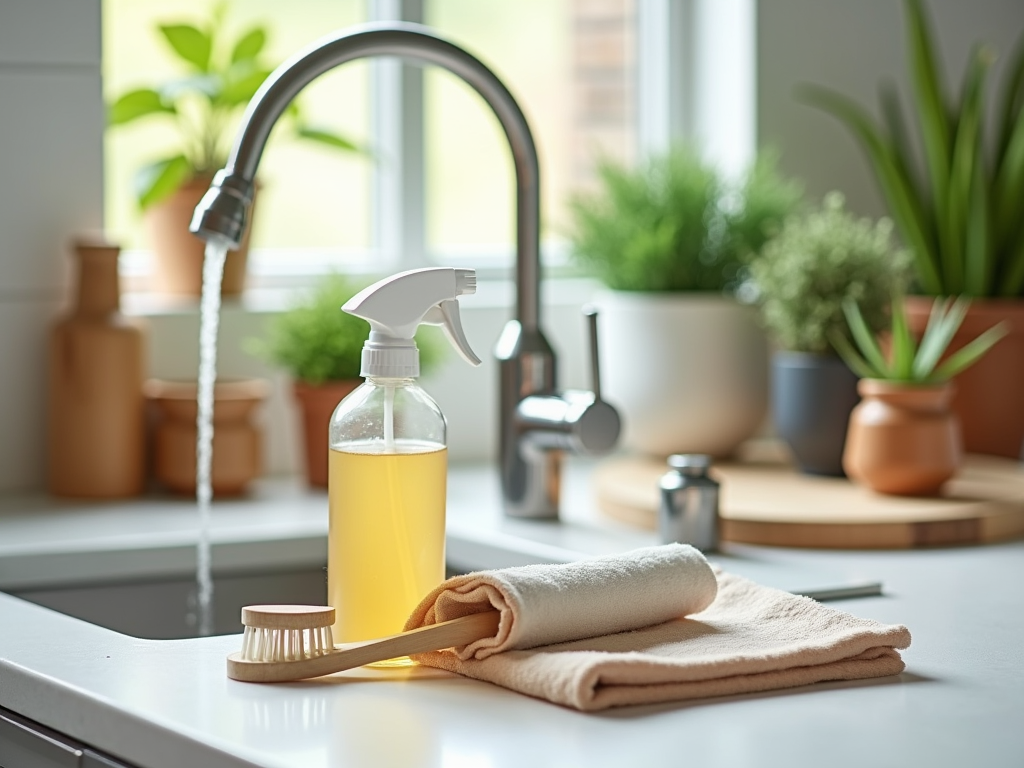Hard water spots on your faucet head can be a frustrating sight, but cleaning them is simpler than you might think. In this article, we will explore effective methods for removing those unsightly mineral deposits, ensuring your faucet looks pristine. The key is to tackle the issue promptly with the right materials and techniques, making your kitchen or bathroom look fresh and new.
Understanding Hard Water Spots

Before diving into the cleaning process, it’s important to understand what hard water spots are and how they form. Hard water contains high levels of minerals such as calcium and magnesium, which can leave behind residue on your fixtures as the water evaporates. Over time, this accumulation creates hard water spots that can be stubborn and difficult to remove. In addition to being unsightly, these deposits can also affect water flow and pressure, making it essential to address them periodically.
Having the right tools and supplies on hand can make the cleaning process more efficient. Here’s a list of what you need:
- White vinegar or lemon juice
- A soft cloth or sponge
- An old toothbrush (for scrubbing)
- Plastic bag or container (if soaking)
- Water
- Baking soda (optional, for tough spots)
White vinegar and lemon juice are natural acids that easily break down mineral deposits, while a soft cloth prevents scratching the surface of your faucet. An old toothbrush is handy for reaching tight spots, and baking soda can provide extra scrubbing power for particularly stubborn buildup. Having a plastic bag or container will also allow you to soak the faucet head for a more thorough clean.
Step-by-Step Cleaning Process
Cleaning your faucet head is a straightforward procedure that can be accomplished in just a few easy steps. Here’s how to do it:
- **Prepare the Solution:** Mix equal parts of white vinegar and water in a bowl, or use straight lemon juice. If you choose to use baking soda, create a paste with water to apply later.
- **Soak the Faucet Head:** If your faucet head is removable, take it off and submerge it in the bowl. If not, soak a cloth in the solution and wrap it around the faucet head.
- **Let It Sit:** Allow the solution to soak for at least 15-30 minutes, depending on the severity of the buildup.
- **Scrub Gently:** After soaking, use the toothbrush or sponge to scrub away any remaining deposits. Be gentle to avoid damaging the finish.
- **Rinse and Dry:** Rinse the faucet head thoroughly with water and dry it with a clean cloth to prevent new spots from forming.
Following these steps will not only remove hard water spots but will also prevent further buildup. Regular maintenance is key; consider doing this cleaning process once a month for best results.
Preventing Future Hard Water Buildup
Prevention is always better than cure, and maintaining your faucet can help minimize the occurrence of hard water spots in the future. Here are some methods to consider:
- **Wipe Down After Use:** Make it a habit to wipe down your faucet with a dry towel after each use to prevent mineral buildup.
- **Install a Water Softener:** If hard water is a significant issue in your home, installing a water softener can help reduce mineral content.
- **Use Cleaning Sprays:** Consider using cleaning products designed specifically for hard water deposits, making regular upkeep easier.
- **Check for Leaks:** Regularly inspect your faucet for leaks, as they can contribute to increased mineral buildup.
Implementing these strategies can significantly enhance the longevity and appearance of your faucet, making maintenance less of a chore.
Conclusion
Cleaning a faucet head to remove hard water spots is an easy and effective task that requires minimal supplies and time. By understanding the nature of hard water and employing the right cleaning techniques, you can restore your faucet’s shine and functionality. Regular maintenance is crucial in preventing mineral deposits from accumulating, ensuring that your kitchen or bathroom remains sparkling clean. So, don’t wait—grab your cleaning supplies and give that faucet head the care it deserves!
Frequently Asked Questions
1. How often should I clean my faucet head for hard water stains?
It’s recommended to clean your faucet head at least once a month to prevent the buildup of hard water spots.
2. Can I use commercial cleaning products instead of vinegar or lemon juice?
Yes, commercial hard water stain removers can be effective as long as they are safe for the faucet’s finish. Always follow manufacturer instructions.
3. Is it safe to soak my faucet head in vinegar overnight?
Soaking for an extended period can sometimes damage certain finishes. It’s best to follow the recommended soaking time of about 15-30 minutes.
4. What should I do if the hard water spots are still visible after cleaning?
If spots persist, try using baking soda paste for tougher stains, or repeat the soaking process with fresh vinegar or lemon juice.
5. Will hard water spots damage my faucet over time?
While hard water spots are primarily aesthetic, neglecting them can lead to corrosion or degradation of the faucet finish over time, so regular cleaning is important.
